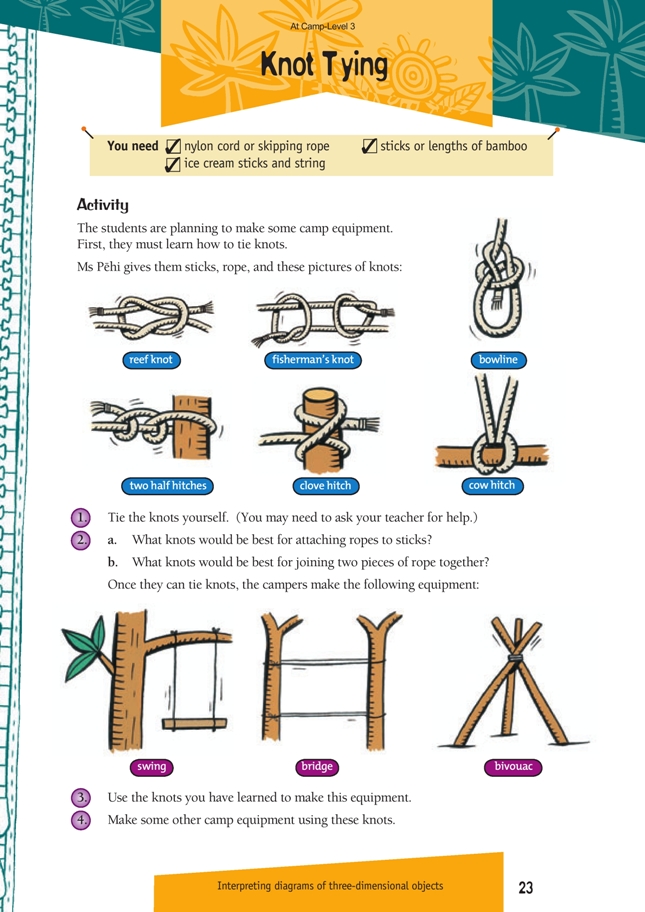This is a level 3 activity from the Figure It Out series.
A PDF of the student activity is included.
Click on the image to enlarge it. Click again to close. Download PDF (317 KB)
FIO, At Camp, Level 3, Knot Tying, page 23
ice cream sticks and string
nylon cord or skipping rope
Knot tying provides a practical context for students to interpret diagrams. The knots shown are still commonly used by truck drivers, climbers, sailors, farmers, and in other occupations where rope is used. Make sure that students use cord of a good thickness. String is not adequate because it is difficult to undo. The most useful knots are those that tighten when tension is applied, which prevents slipping. The names of some of these knots give an indication of their original purpose. For example, the fisherman’s knot was designed to join two lengths of fishing line. The bowline was designed to create a fixed loop of rope that looked rather like a bow.
In completing question 3, encourage students to think about the best knots to use before building the equipment. For example, in constructing the swing, students might use cow hitches to tie the rope to the swing wood. This will provide a double rope on each side, which can be tied to the tree limb using either two half hitches tied with two pieces of rope or a reef knot if the two single lengths of rope are looped over the limb in opposite directions.
Answers to Activity
1. Practical activity
2. a. Two half hitches, the clove hitch, and the cow hitch. (The bowline does not fasten tightly enough.)
b. Reef and fisherman’s knots
3. Practical activity
4. Practical activity
